Hide Show
Sell/Trade Us Your Car | Click Here To Learn More
Your tire pressure light provides a critical reminder to restore the pressure in your vehicle's tires when it gets low. You should only attempt to reset the light after first addressing the tire pressure in every tire. Once your tires are at the appropriate pressure, the light may go off on its own. If it doesn't go off right away, driving at 50 mph for about 10 minutes should help the tire pressure sensor reset.
If the tire pressure light is still on, there are a few more tricks you can try:
TPMS stands for Tire Pressure Monitoring System. The tire pressure light is one component of this electronic system, providing a visual alert when your tire pressure is low. The TPMS monitors tire pressure using either an indirect or direct method.
An indirect TPMS measures the rate of revolution for each wheel. If a wheel starts spinning faster than anticipated, the system signals to your vehicle's computer that something is amiss with the tire rotation, and your tire pressure light comes on. You must manually reset the monitor in an indirect TPMS system.
A direct TPMS uses pressure monitoring sensors in each tire to monitor tire pressure exactly. This is a more accurate alternative to an indirect TPMS system. The batteries inside these sensors will last for about 10 years. Direct TPMS systems reset automatically after tire inflation or rotation. You do need to have these sensors resynchronized when you get new tires, which requires a special tool.
Yes, cold weather will affect the air pressure in your tires. Your tires lose one or two pounds per square inch (PSI) for every 10 degrees that the temperature drops. Cold air condenses while warm air expands. Therefore, the colder air in your tires will take up less space in lower temperatures.
You may find that your TPMS light is only illuminated for a short time in the morning on particularly cold days. After about 20 minutes of driving, the air will often warm up and expand, restoring proper pressure in your tires. If the light stays on after 20 minutes on the road, you should add air to your tires as needed to restore the proper pressure. Low tire pressure is hazardous for your vehicle regardless of the cause.
If the light stays on after 20 minutes on the road, you should add air to your tires as needed to restore the proper pressure. Low tire pressure is hazardous for your vehicle regardless of the cause.
When the tire pressure monitor light is on, the first thing you should do is check the pressure in each of your tires, including the spare. Check the manufacturer's recommendation to determine the appropriate pressure for each tire. This is typically between 30 and 35 PSI but may vary. You should measure tire pressure when the tires are cold, which means they have not been driven in the last three hours.
To check the pressure, simply unscrew the valve cap and insert a tire gauge into the valve stem. The gauge will provide a clear reading. Replace the valve cap when you're finished. If your tires are all at the appropriate pressure, there's a malfunction with your TPMS. Bring your vehicle to an authorized dealership service center to diagnose and resolve the issue.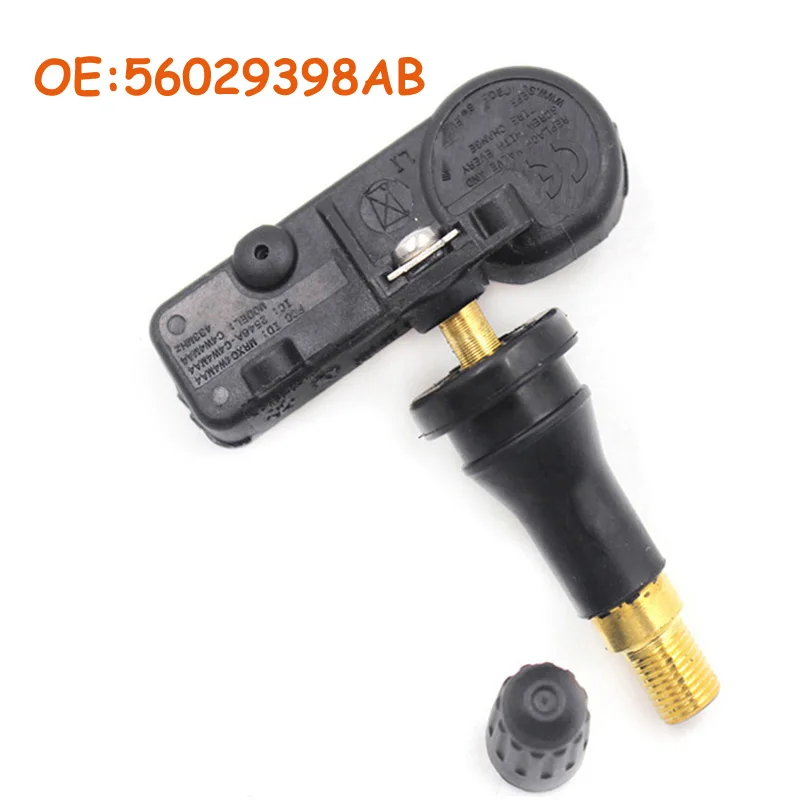
If the tire pressure monitor light is on, you should check your tire pressure as soon as possible. Low tire pressure creates a serious hazard on the road. According to the National Highway Traffic Safety Administration, 738 people died in tire-related crashes in 2017. When tire pressure is low, the tire has more contact with the road. This may cause the tire to overheat, leading to tread separation, excessive tire wear, or a blowout.
Low tire pressure also wreaks havoc on your fuel efficiency. You can save up to 11 cents per gallon simply by keeping your tires properly inflated. You'll also save money on tire replacements with adequate inflation. Keeping your tires properly inflated can add 4,700 miles to the tire's average lifespan.
The tire pressure monitor light gives you valuable information and should not be ignored.
You do not necessarily need to have your TPMS sensors replaced with new tires, but this is a good time to check them and make sure they're still in good condition. If you have an indirect TPMS system, your mechanic will need to manually reset the sensors after changing your tires. If you have a direct TPMS system, no additional maintenance is required to reset the system.
If you have an indirect TPMS system, your mechanic will need to manually reset the sensors after changing your tires. If you have a direct TPMS system, no additional maintenance is required to reset the system.
A new TPMS system will typically last for about 10 years before the batteries run out. If you have an older vehicle, you may need new sensors every five or six years. Your mechanic can advise you on the best time to replace TPMS sensors for your vehicle. When new sensors are installed, the system must relearn the location of each tire, which requires a detailed series of technical procedures. You should leave this task to a professional.
If you need tire service for your Toyota, come to Kings Toyota for prompt, reliable service. Our highly-trained technicians are equipped to assist with any type of tire issue, whether you need new tires or have a malfunctioning tire pressure sensor light. Make your appointment today.
First Name*
Last Name*
Contact Me by*
EmailPhone
by Mark Stevens
82 shares
Last Updated on June 1, 2022
You’ve probably been there before.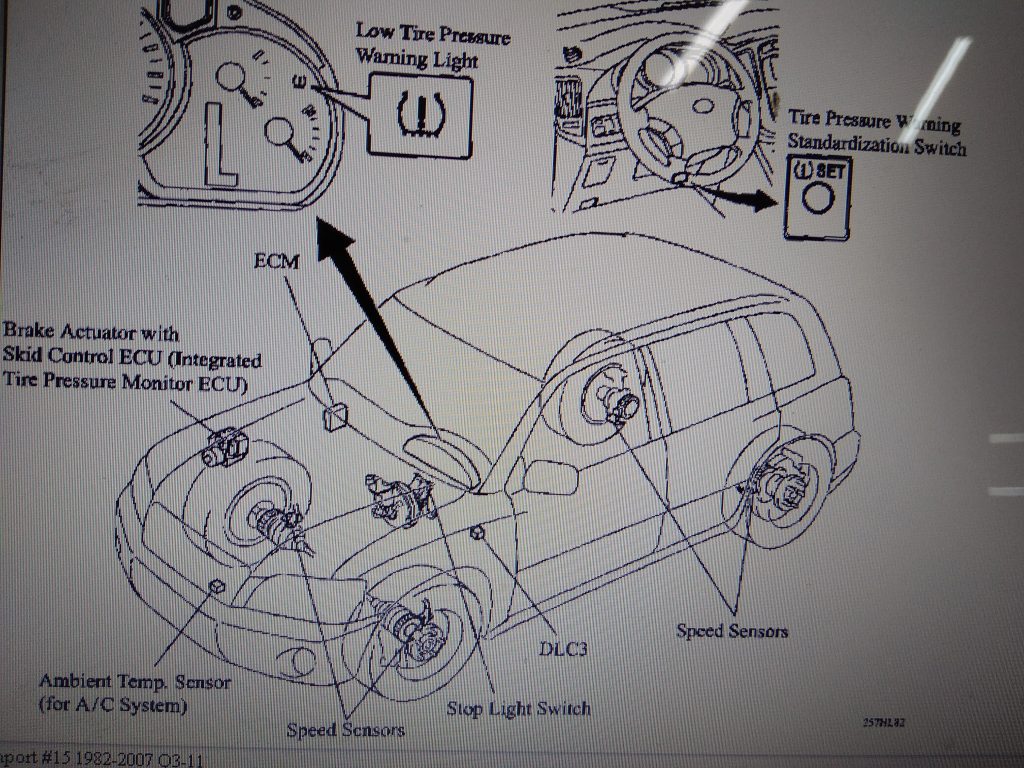 While driving, your instrument cluster suddenly displays a “Tire Pressure Sensor Fault” message or warning light. But what exactly does it mean and how do you fix it?
While driving, your instrument cluster suddenly displays a “Tire Pressure Sensor Fault” message or warning light. But what exactly does it mean and how do you fix it?
Table of Contents
A tire pressure sensor is a small computer located inside each tire. It is designed to alert drivers of an under-inflated tire. Tire pressure sensors, or TPMS for short, have been mandatory on all vehicles in the U.S. since 2007.
Need help with a car problem RIGHT NOW?
Click Here to chat online with a verified mechanic who will answer your questions.
There are two common types of tire pressure sensors. The first is a valve type: the sensor and valve stem are one unit. The second is a band sensor: the sensor is mounted to the inside of the rim with a metal band.
Both sensors illuminate the dash light when the pressure reading is lower than it’s supposed to be, alerting the driver to a tire with low air pressure.
When a tire pressure sensor detects a problem with tire pressure, it will send a signal to the car’s computer, which will then illuminate a light on the dash.
This light is generally bright yellow, and looks like an exclamation point (!), inside of a “U” shaped symbol. This is the drivers warning to check on their tires, as one may be flat or just low.
See Also: Why is My TPMS Light On But My Tires Are Fine?
Driving on an under-inflated tire can cause the vehicle to pull in one direction or the other, depending on which tire is low. This will cause the driver to have poor control over the vehicle, which is very dangerous.
Driving on a low tire can also at the least cause unbalanced tire wear and at most cause damage to the structural integrity of the tire, mainly the sidewall. This eventually can cause a blow out to occur once the tire is re-inflated. Driving on a completely flat tire will require that tire to be replaced due to this damage.
Driving on a completely flat tire will require that tire to be replaced due to this damage.
If you’ve confirmed that the tire pressure is adequate in all of the tires, then the the sensor has simply failed. At this point, the only concern the driver will have is the light glaring at them from the dash.
A failed sensor will require the driver to be more attentive to the pressure in their tires, since it is not reading the actual pressure anymore. This should be fixed at the earliest convenience for safety reasons.
Related: What To Do If You Get a Flat
The quickest and easiest repair for this issue is to check the pressure of all the tires with a quality air pressure gauge. These gauges can be picked up at any parts store and even most gas stations.
Don’t forget to check the spare tire too! Many vehicles have a pressure sensor in the spare and it is often overlooked.
As little as 5 PSI under the manufacturer recommended pressure can cause the dash warning light to illuminate.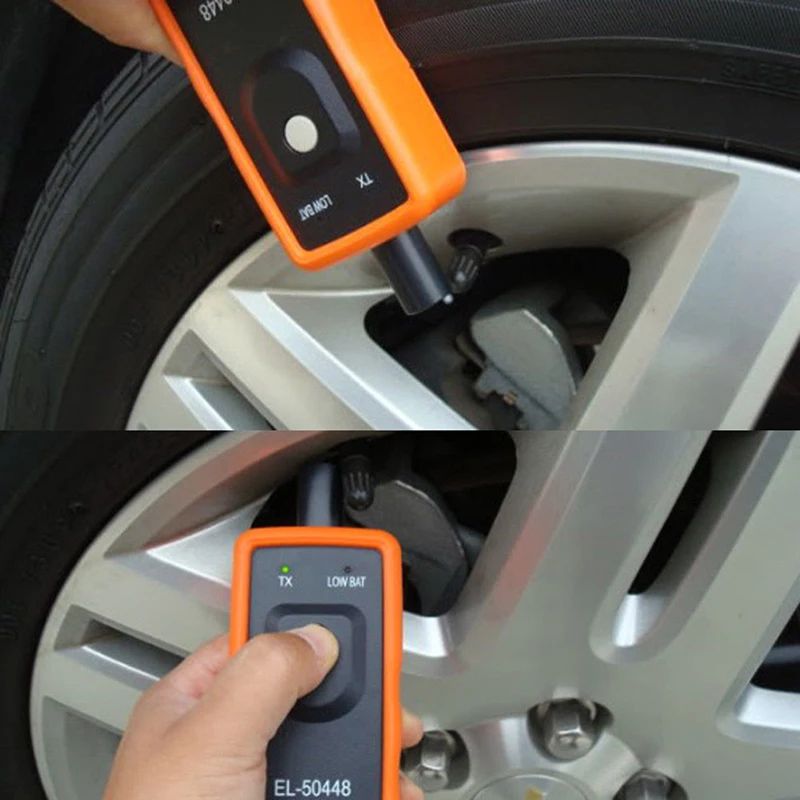 The manufacturer recommended pressure can be found in the owners manual, or on a sticker located on the drivers side doorjamb.
The manufacturer recommended pressure can be found in the owners manual, or on a sticker located on the drivers side doorjamb.
Related: How Long Can You Drive on a Spare Tire?
If checking and adjusting the tire pressure to within the proper specs does not remedy the problem, chances are good replacing the tire pressure sensor is necessary. The failed sensor can be identified using an OBD2 scanner, or through the vehicle’s dashboard computer options, depending on the model.
While having an automotive scan tool will let you diagnose the problem yourself, you can always have a local tire or repair shop perform a scan to quickly identify which sensor has failed. The battery life of these sensors range anywhere from 2 to 10 years.
In order to replace a failed tire pressure sensor, the wheel with the bad sensor must have the tire dismounted. Once the tire is off the rim, the old sensor can be removed and the new one installed.
After the new sensor is put in the rim, the tire will be remounted and inflated. Then comes reprogramming so the car’s computer will recognize it.
Since most car owners don’t have the capability to dismount and remount a tire, a trip to the local tire shop is necessary. Fortunately, the process isn’t very expensive and you can usually purchase the TPMS sensor cheaper on your own to save some money.
The reprogramming process varies for each vehicle’s make and model. Some cars require a certain amount of mileage to be put on the new sensor for the computer to recognize it, usually just a couple miles.
Other vehicles must be reprogrammed using the same scanner that found the bad one. The scanner programs the sensor’s signal to the car’s computer so the two can communicate. Without this, the dash light will stay illuminated because the computer can’t read the new sensor, making reprogramming a crucial part of the replacement.
The cost of a tire pressure sensor replacement varies with the car. The main cost of this repair is the sensor itself. Luxury brands, such as Audi and Land Rover, will have a much higher sensor cost than Ford, Honda, or Toyota, for example. These sensors can range anywhere from $50 up into the hundreds, for a single sensor.
The labor that goes into replacing the sensor is minimal, usually in the range of 1/2 to 1 labor hour per sensor. It is important to keep in mind, the cost of labor is different at all repair shops.
A big name dealership will have a higher hourly labor cost than a small family owned repair shop. Some shops will also charge a reprogramming fee. Always be sure to ask about hourly labor costs and reprogramming fees when looking for a place to replace the sensor.
Choosing a place to have a repair of any sort done is solely up to the owner of the vehicle, and sensor replacement is no different! Of course, it is always recommended to choose a repair shop that is trustworthy and reputable.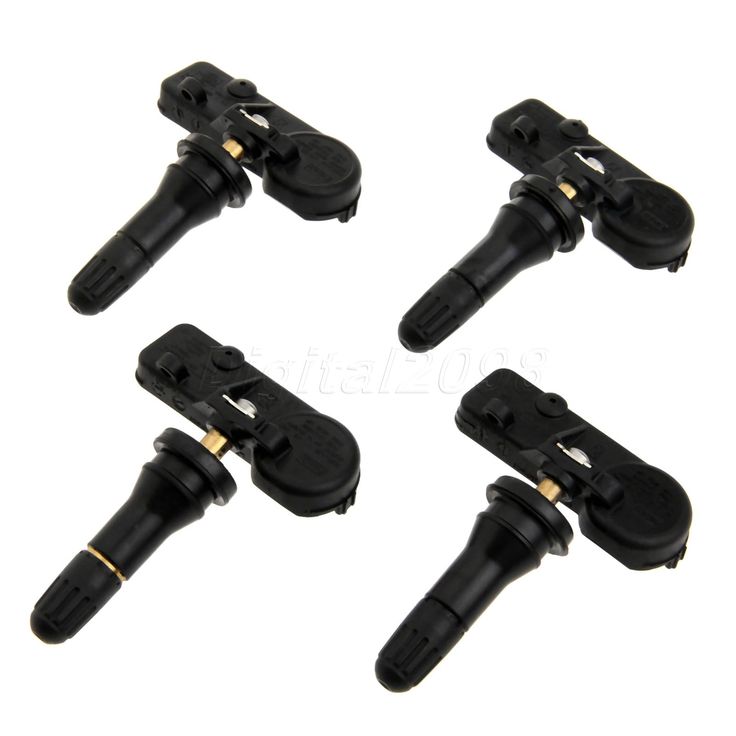 Avoid those shady places!
Avoid those shady places!
However, when it comes to tire pressure sensors, a big name dealership is not always the best choice either. A local tire shop should have the capability and knowledge to replace the sensor correctly.
Be sure to inquire about labor and part warranty when having any kind of work done at a shop. No one wants to spend money on a repair, just to find out the part was faulty or the labor done wrong.
Categories Electrical, Tires & Wheels Tags sensor, tpmsAsk a question, get an answer ASAP!
Updated requirements for the production of modern cars include mandatory TPMS. The direct type TPMS analyzes small, large and sudden changes in pressure. Device sensors are placed inside each tire and signal a problem by transmitting information to the on-board computer. As a result, a special indicator lights up on the dashboard. This device provides a lot of positive aspects. The system notifies the driver that the pressure in the tires of the car is reduced relative to the established norms.
Timely elimination of the problem allows:
Like many car parts, the TPMS system needs periodic qualified maintenance, which is available at the Shlepakov Tire Bureau.
What is included in our service package?
In the maintenance of tire pressure monitoring systems, our specialists are ready to provide you with the following services:
diagnostics of the TPMS system - using the most modern equipment allows you to solve any problem related to replacing sensors, setting up and restoring the functionality of the system. The year of manufacture, model and brand of car does not matter;
cloning or duplication of sensors - this service means the repair or replacement of a standard sensor by copying information from it and transferring it to a new original or universal sensor. As a result, the clones completely repeat the regular device and function immediately in the normal mode;
registration of tire pressure sensors - recently, on cars of Asian or American production, pressure monitoring systems are increasingly found that require registration of the sensor in the on-board computer for its normal operation. This service is available for all types of cars, any year of manufacture;
This service is available for all types of cars, any year of manufacture;
installation of aftermarket TPMS systems - if your vehicle manufacturer has not provided for the presence of a device that is important today, we will help you correct this defect. Our experts will help you choose a TPMS system, install and connect it, and set up its correct functioning.
If you want to keep up with technological progress or suspect a malfunction in the operation of the equipment, contact the professionals of the Shlepakov Tire Bureau, and we will solve the problem of any complexity.
Autel 315 MHz universal MX sensors with a metal stem are designed to monitor tire pressure and temperature. The device consists of an electronic measuring and control component, a battery and a transmitting antenna. The sensor is installed on each wheel instead of a regular valve, and the signals from it are transmitted by pulses at a certain frequency.
The Autel TPMS Universal Reprogrammable Sensor is used as the most affordable way to eliminate the need for costly original sensors (OEM sensors) on vehicles fitted with tire pressure monitoring systems.
Special Features:
98% coverage of all original sensors (OEM). Autel sensors allow you to create a full copy of the original sensor, released by manufacturers such as Schrader, Continental, Huf, TRW, etc.
100% compatible. Autel is a manufacturer of sensors and equipment for working with sensors, which allows you to have full compatibility of software, communication protocols with equipment installed on the car.
Ease of installation. The nipple with angle adjustment up to 35° and detachable from the main sensor makes it possible to simplify the process of installing the sensor on alloy wheels, thereby saving time on vehicle maintenance during seasonal peaks in demand (time = money).
Sensor serviceability. Support for wireless programming gives you the freedom to work with sensors and gives you the ability to work with sensors mounted on rims.
Support for wireless programming gives you the freedom to work with sensors and gives you the ability to work with sensors mounted on rims.
Sensor quality. All sensors are tested and certified to SAE standards.
Durability. The average service life of the sensor, depending on the operating conditions, is 5-7 years, which indicates the high quality of Autel sensors.
Warranty. The unique warranty for genuine Autel sensors purchased from Autel Russia is 2 years.
Low sensor weight. Allows you to minimize the number of weights installed on the rim when balancing the wheel after assembly.
Messages on the display
Updates 5/31/2021
For example , if the message Check Status appears on the front display. autom. on the center display, you need to calibrate/store the new tire pressure in the tire pressure monitoring system.
autom. on the center display, you need to calibrate/store the new tire pressure in the tire pressure monitoring system.
For vehicles manufactured from November 2018, the Calibration command can be renamed to Save Pressure in the Vehicle Status folder under the TPMS option.
If, for example, the message Tire pressure low appears on the front display, Check the condition. autom. on the center display, or if you have just changed a tire, or you have a vehicle with a new team name, then in order to calibrate the tire monitoring system, follow the instructions below, but instead of the Calibration option, select the Save pressure option. Calibration will be performed automatically later while driving.
After changing tires or after adjusting the tire pressure, the new tire pressure must be calibrated/stored in the tire pressure monitoring system. Similarly, calibration is required if this symbol lights up and/or if the message Check Status appears on the front display. autom. on the center display. When calibrating/storing a new tire pressure, the tire pressure is checked and stored in the system. To do this:
autom. on the center display. When calibrating/storing a new tire pressure, the tire pressure is checked and stored in the system. To do this:
Inflate all tires and check the pressure with the ignition off. For more information about tire pressure, see the appropriate tire pressure decal on the door pillar on the driver's side.
Start the engine.
Open the Vehicle Status application.
Press TPMS.
Select Calibration.
Press OK to confirm that all four tire pressures have been checked and adjusted.
Travel by car.
Saving new tire pressure is performed when the vehicle is running at speeds above 35 km/h (22 mph).
When enough data has been collected for the system to detect low tire pressure, the messages indicating the progress of saving the data disappear from the center display. The system does not issue additional confirmation that the new tire pressure value has been saved.
Allow the system to complete data storage within one driving cycle to ensure that the new tire pressure value is stored correctly.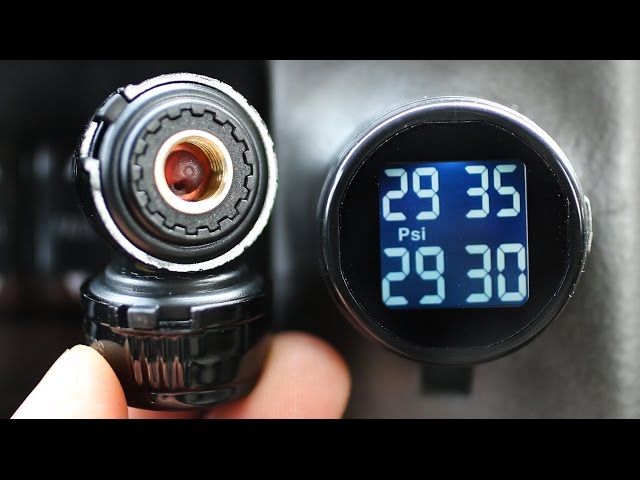 If the new tire pressure value cannot be saved, the message Failed to save tire pressure data is displayed. Please try again.
If the new tire pressure value cannot be saved, the message Failed to save tire pressure data is displayed. Please try again.
Tire pressure information can be found on the sticker on the door pillar by the driver's door.
Remember to save the new tire pressure after every tire change or tire pressure adjustment.
The vehicle must be completely stationary when the tire pressure is restored.
We recommend that you read the owner's manual for your vehicle model for additional information and any important warnings.
XC90 and XC90 Twin Engine from model year 2016
S90, V90 and V90 Cross Country from model year 2017 to model year 2021
XC40, XC60, XC60 Twin Engine, V90 Twin Engine and S90 Twin Engine from model year 2018 to model year 2021
V60, V60 Twin Engine and V60 Cross Country from model year 2019 onwards
S60 and S60 Twin Engine from model year 2020
The range of models varies from market to market.